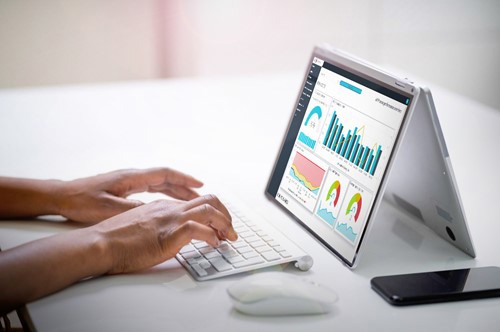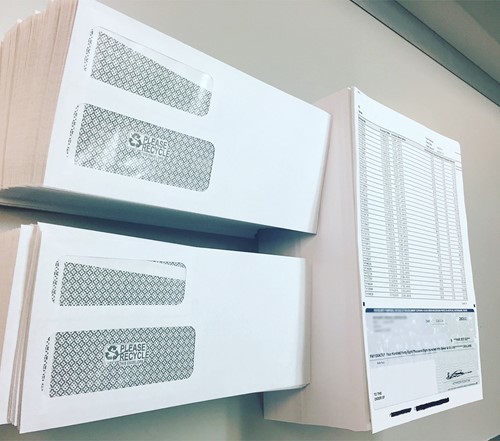7 Challenges Accounts Payable Managers Face
Accounts payable (AP) managers will face new challenges because of technological advances, multiple payment channels, and pressure to reduce costs. Cloud technology and software automation, for example, have opened many doors for accounts payable managers to streamline processes, but there are still uncertainties on when and how to make AP changes to realize the benefits of these new opportunities.
This adds a level of complexity to an AP manager's job while providing hope of greater flexibility and insight into the data generated from your accounts payable department. To help, we will address some of the most significant challenges accounts payable managers will face in the future and how best to prepare.
1) Managing Data Beyond Payments
Accounts payable may have appeared simpler decades ago, when managers only had to focus on paying outstanding debt in a reasonable amount of time.
Now AP managers handle much more than payments; they’re expected to take advantage of incentives, connect to different banks, streamline processes for vendors, transmit remittance advice, track the different payment channels, as well as monitor overall data to find efficiencies that save money.
In addition, many firms expect accounts payable managers to oversee dozens of employees while forecasting cash flow and anticipating cash needs. The success of a company’s flexibility depends more than ever on an AP managers' ability to gather insight quickly from their reports and trends and inform other sectors of the business.
This data can grow in complexity and at a rapid pace, but accounts payable managers can find an easy solution to analyzing their data by quickly exporting reports and mining key information.
Here at Medius, we offer a cloud-based platform that enables real-time business intelligence analytics and tracking from anywhere, at anytime.

2) Database Errors Due to Manual Input
If accounts payable managers are still relying on manually inputting invoices, there is a significant chance there will be errors. The information entered into the database may not be reliable, and it will create uncertainty about the accuracy of the company’s AP history.
It’s a time and resource hog that results in the accounts payable manager spending some of their time manually fixing errors and checking for discrepancies. An accounts payable manager can reduce budget and time by leveraging internal resources in the most efficient way possible.
Switching over to AP automation and using accurate image processors to read incoming invoices is one way accounts payable manages can avoid this problem going forward.
3) Becoming a Perfect Payer
What is a perfect payer? A perfect payer simply describes a payer who makes on-time payments using the least expensive payment channel and takes full advantage of any available payment incentives. By becoming a perfect payer, an accounts payable manager can save money and time on a larger scale.
But how can you determine the most effective payment channel from several payment options?
How can you schedule payments on time when there are so many payments to manage?
For accounts payable managers, the trick is to automate the process to take advantage of any potential savings and virtual card rebate programs.

4) Determining Efficiencies of Offsite or Onsite Check Printing
Managing paper continues to be the overwhelming consumer of AP time and labor. It simply doesn't have to be that way. For companies issuing over 250 checks per week, it shouldn't be.
Supplies and postage discounts and offsite printing efficiencies really add up to saving that make significant impacts to companies. What is important to remember for AP managers is that incorporating AP automation does not require them to overhaul their existing technology and infrastructure; it’s rather a system's integration on top of current processes.
There is no reason to reinvent the wheel… just improve it.
5) Managing Multiple Accounts Payable Channels
When dealing with vendors, contractors, and even employees, accounts payable managers will find that some vendors accept multiple payment modes — or they may request only one.
Some employees and vendors may still insist on paper checks; direct deposit might not be an option. Other vendors and contractors may insist on receiving payments through their own accounts receivable channels, creating difficulty when trying to pay in a timely manner.
Therefore, it’s essential that accounts payable managers find a solution that allows them to use a centralized payment hub to interface into their accounting or ERP system to securely automate all payments.
6) Collecting Invoices from Various Channels
Invoices come from a variety of sources, whether in an email, a handwritten bill, a fax, or a standard mailed invoice. Vendors and contractors often use their own invoices, which are not standardized. This requires software or personnel to interpret each invoice.
Doing so assumes that the interpretation is correct and errors are not introduced. A dream come true for accounts payable managers is software automation using advances in Machine Learning (ML) technology to read invoices that are handwritten or formatted uniquely.

7) Collecting Vendor Bank Instructions for Payment Programs
Paying vendors via ePayments is a business “no-brainer.” Costs are significantly lower when money moves electronically versus on paper. The trouble is getting started: Collecting the ACH instructions for a database of thousands of vendors.
Most solutions only enable issuing ACH payments. They provide little help to get the process running. Accounts payable managers may envision keying in the data from their thousands of vendors. Now there are solutions that allow you to collect vendor bank instructions. Find the one that allows you to own your vendor database and can streamline communications to enable launch of an ePayment program in a matter of weeks.
As you can see, AP managers have many challenges and opportunities because of automation, networking, and changes in payer systems. It is vital for companies and accounts payable departments to be agile in this ever-changing environment and start pursuing accounts payable software automation.
About Medius
Medius links invoice capture, processing and payment to replace the worry and wondering of managing AP with calm and confidence. With one look at a demo, you’ll see how Medius solutions turn endless email, PDF and paper invoices into a simple, secure, automated process. But that’s just the beginning—Medius goes far beyond basic automation by using artificial intelligence to do the work, so invoices get coded, approved and paid, and AP teams get to (heaven forbid) go home and rest easy. Your business will get the transparency you need to see exactly what’s pending and what’s paid, so you can be confident your forecasts are spot-on and there’s virtually no chance of fraud from fake invoices. And you won’t have to worry about high implementation costs and consultants, because you’ll start seeing the value immediately and the innovation won’t stop.
Originally posted September 2021. Updated for quality and accuracy October 5th, 2022.






